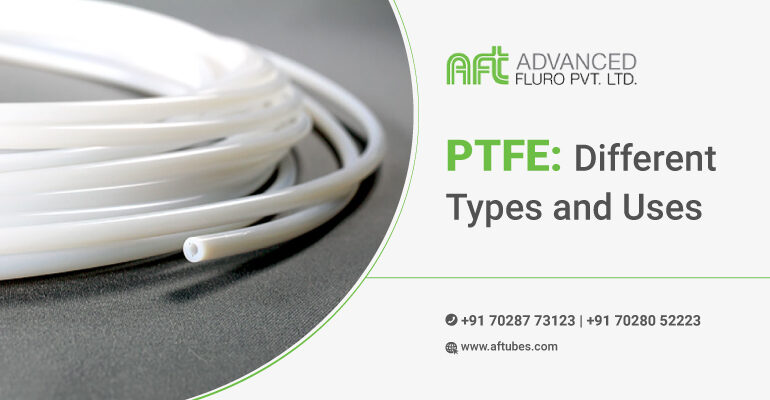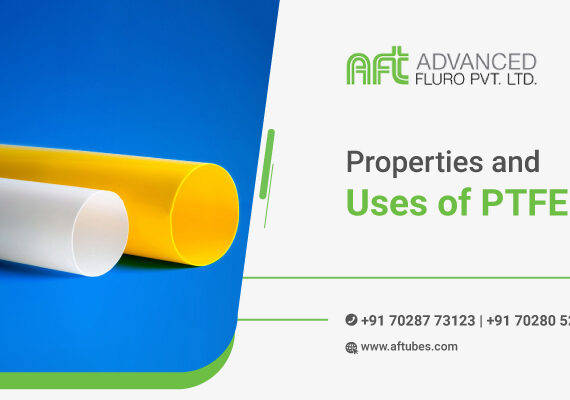Different Types of PTFE Teflon Tubes and Its Uses
Manufacturers are finding it more challenging to meet the different requirements across industry sectors as applications become more demanding and hence the requirement for PTFE tubes grows. Over the last two decades, PTFE tubes have made their way into various industries in the form of pipes, coatings, and other vital components. Contact Advanced Fluro if you are looking to buy any of the PTFE products. They have the best PTFE Teflon tubes available in different types and sizes.
Three Types of PTFE Teflon Tubes
Manufacturers of PTFE products usually divide Teflon tubes into three groups based on wall thickness, tube diameter, and functionality.
High-pressure Hoses:
The high-pressure PTFE Hose combines lightweight construction with natural or an anti-static PTFE liner. These hoses are available in different reinforcing styles–braid, bunch braid, and spiral/braid combinations. They are ideal for many chemical, gas, and high-purity applications. They are also suitable for hydraulic applications and most gas applications.
Spaghetti Tubes:
Spaghetti tubing, like extruded or smoothbore tubing, refers to smaller-diameter tubing. Manufacturers primarily use spaghetti tubing in the electronics industry. The notable qualities of the applications include P.T.F.E.’s unique temperature resistance and dielectric strength.
Pipe Liners:
PTFE-lined pipes are a long-term, cost-effective solution for applications that include transferring or storing highly corrosive fluids under harsh conditions. The PTFE liner is chemically inert and can withstand many corrosive liquids when used at high pressures and temperatures up to 230°C. The lining materials achieve this by using the pipe material’s structural strength.
Various Uses of PTFE Teflon Tubes
With many applications and forms, PTFE tubes contribute to various uses, as mentioned below.
Splitting: PTFE tubes have a ridge on the inside wall that allows them to be split lengthwise. This enables medical experts worldwide to remove PTFE introducers without causing the central system to dislocate.
Heat Shrinkable: Some PTFE tubing comprises an extremely thin polymer that may be heat shrunk. When a building’s interior is exposed to hot air, it continues to shrink. This allows for the manufacture of wires, glass tubes, and other types of insulation.
Multi-lumen: The interior of PTFE tubing can be made up of a single large tube and several smaller tubes. Each surface contains a different type of fluid or wire. Multi-lumen lines are employed in a wide variety of medicinal applications.
Filled: PTFE tube can contain chemical additives that that enhance selected properties. This is a valuable type of PTFE tubing in medical applications since it is visible on X-rays. Fillers are frequently utilized when anti-static properties are required.
Primary Characteristics for Usage of PTFE Tubes
These are the three exceptional characteristics of PTFE tubing, and they are the primary explanation for the widespread use of Teflon tubes,
Resistant to heat: This plastic has unusually high melting temperatures due to its excellent heat resistance. This makes it ideal for businesses where transporting hot liquids is a regular occurrence.
Resistant to corrosion: Because PTFE is chemically inert, it can withstand a wide range of solid chemicals and acids. It’s also impermeable, which means water can’t get through. As a result, PTFE tubing is an excellent choice for transporting chemicals.
Low coefficient of friction: PTFE tubing is ideal for use in snares and catheters because of its low coefficient of friction, which is (0.1).
Contact Advanced Fluro for all PTFE Products
When it comes to PTFE products, Advanced Fluro is one of the top PTFE tube manufacturers in India. So, when they produce PTFE products, they always consider a wide range of uses and applications. Contact us today if you are searching for reliable tubing.
FAQs
- What type of material is PTFE?
PTFE (polytetrafluoroethylene) is a low-friction, soft fluoropolymer with excellent chemical and weathering resistance. PTFE is utilized in high-temperature situations because it is stable at temperatures up to 500°F.
- Is PTFE rubber or plastic?
It’s not metal, it’s not rubber, and it’s not quite plastic. PTFE is a thermoplastic polymer with a slick surface, a high melting point, and resistance to “attack” by practically all chemicals.









